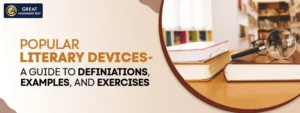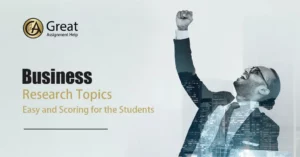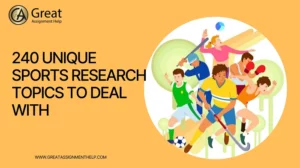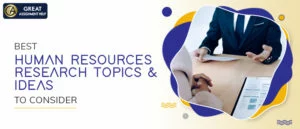If you wish to present your literary work in a fresh and appealing manner, you must use literary devices properly. Basically, a literary device is a powerful instrument that writers employ to express themselves artistically. Often, to take a piece of writing beyond its actual meaning, poets and literary authors, rely on literary techniques and elevate a scene, a scenario, and a character in a tale or poem. The English language has a variety of literary devices such as simile, metaphor, personification, and so on. For your better understanding, here, in this blog, we have explained in detail the popular literary devices in English with examples. Continue reading to know how to use it in your work and showcase your creativity.
What are Literary Devices?
Literary devices are linguistic tactics that are employed to communicate a deeper meaning that goes beyond the literal meaning. It mainly helps literary writers to express their thoughts in fresh ways and urge the target readers to perceive them. Also, it plays a vital role in setting up a creative connection or interaction between objects.
Literary devices not only link things but also offer richness to literature by raising tone, emotion, sensibility, and story. There are several literary devices available in English, but each serves a unique purpose.
In the next section, let us have a look at some different types of literary devices in English.
Also, Read – 136 Literary Research Topics – To Gauge in the Literature
What is a Comparison?
Meanwhile, a comparison is a popular form of connection that you may apply in literary devices. Also, similes and metaphors constitute the most obvious examples of comparisons used in literary devices.
- Basically, a metaphor ensures a direct comparison between two things. For example, “The tree is a giant”.
- Alternatively, a simile makes an indirect comparison. For example, “the tree is like a giant”.
- Another literary device that might establish a connection includes imagery and vivid description. In short, such descriptions might connect your descriptive writing to the world of senses.
- Lastly, an alliteration applies the word sounds itself to create new literary connections. For example, alligators and apples.
Thus, all literary devices establish a connection that might include the following:
- Sense
- Emotion
- A rich layer of sound.
- Narrative
- Finally, a meaning that surpasses the precise details which were recounted.
List of Popular Literary Devices
Though, numerous types of literary devices exist, however, it doesn’t seem possible to cover all in a single article. Hence, we have picked a few common literary devices that you might require to enhance your creative skills. Also, it might help you to get through any competitive exams you desire. Let’s explore them one by one.
1. Metaphors
Just to recall, a metaphor is merely a statement that compares two objects, mostly unrelated to each other. Let’s explore the example below to understand metaphors in a better way.
“This tree is the god of the forest.”
Certainly, the tree is not a god, in fact, it is a tree. But, by adding the word “God”, the readers might perceive the tree as something powerful, huge as well as adamant. Furthermore, using God instead of a giant to describe the tree, gives a spiritual presence to the tree for the audience.
Besides, a metaphor might enable the writers to use multiple descriptions and pictures in a single sentence. Also, a metaphor holds a greater value than the direct descriptions of two objects. For example, if you describe a tree as a huge and spiritual power, its significance might not seem clear to the audience.
2. Simile
Though a simile is the same as a metaphor, they create different meanings. Similar to a metaphor, it compares two unrelated objects. However, the comparison depends on the words “as” or “like”.
”This tree is like the god of the forest.”
“This tree acts as the god of the forest.”
Before we go ahead and learn about more literary devices, first let us explore the difference between metaphors and similes.
Simile and Metaphor- What is the Difference?
Since we already know the basic difference between a simile and a metaphor, let’s explore its further difference.
- Simply, in a simile, the readers might understand that the tree is huge enough, yet it isn’t as supreme as God.
- Alternatively, a metaphor is applied as a core device in a poem or a story. Also, it encompasses the key to what you might want to say. Rather, a simile is better used as a form of supporting device.
Simile and Metaphor- Writing Exercise
Mostly, metaphors and similes comprise two components, tenors and vehicles. Generally, the tenors describe a subject, while vehicles are the image that describes the tenor.
Example: “The tree is a god of the forest.” In this sentence, the tree is the tenure, while the god of the forest is the vehicle.
3. Imagery
Indeed, imagery is both a literary as well as a figurative device. Also, it depends upon the interplay of sensation and language to develop a sharp brain image. Moreover, the imagery doesn’t only involve description, but it includes using imagery to appeal to all five senses. Furthermore, if you appeal to the writer’s sense of sight, taste, touch, and smell, certainly a dynamic world will result.
Sight Imagery- The tree spread its huge, sun-flecked shoulders.
Sound Imagery- The jungle was hushed, iterating with the echoes of the tree’s aloof silence.
Touch Imagery- The tree felt smooth as butter.
Taste Imagery- The tree leaves tasted bitter, like unroasted coffee beans.
Smell Imagery- As we came near the tree, the air surrounding it smelled precise and crisp.
4. Symbolism
Generally, symbolism integrates a lot of ideas depicted in imagery and metaphor. Necessarily, symbolism is the application of an object to depict a concept. In short, it’s a kind of metaphor, but it’s more concise. To illustrate, you may use symbols anywhere in the English Language. Perhaps, we often use common literary devices in both designs and speech, but we don’t realize it.
Read More – An Understanding of the Language Features and Structural Features
Examples:
“Love” is represented by a red rose.
“Peace” is represented by a white dove.
“Idea” is represented by a switched-on lighting bulb.
“Conformity” is represented by sheep.
Furthermore, a symbol seems contextually specific, let’s explore it through an example given below:
For instance, a popular practice in Welsh marriage is to gift your better half a love spoon as a tradition. Moreover, the man designs the spoon to indicate a unique relationship and an evergreen bond.
5. Personification
Specifically, personification gives human attributes to non-living things. Also, it’s a strong way to encourage empathy among your readers. Moreover, you may assume personification as a specific type of imagery, where you may describe non-human objects through your five senses. Perhaps, you will give these non-human objects a human description and appeal to the senses of the audience. Let’s explore a few examples below that might help us understand personification through the five senses.
Sight- The bike jumped over the bridge.
Sound- The bike coughed, spluttered, and hacked.
Touch- The curtain was as smooth as butter.
Taste- The car tasted the bitter accident.
Smell- The bike needed a bad shower.
Mental Events- The house remembered its first owner fondly.
6. Hyperbole
If your professor describes things to you very dramatically, perhaps she is speaking in hyperbole. Thus, hyperbole is just another name for behaving over-dramatically. Fundamentally, hyperbole might refer to an exaggerated description or statements made about things. For instance, in the English language, you may explain hyperbole through the following cases.
She has been waiting for ages for this to happen.
I am so thirsty, I could even drink blood.
He feels like a million bucks.
She is the king of the kitchen.
Certainly, none of these examples needs a literal interpretation, because no person will survive for ages. Also, no person will drink blood to quench his extreme thirst. Rather, such popular literary devices help us to relate our emotions to something extreme.
7. Irony
Though the irony is literary, mostly it is used inappropriately. Generally, a person describes an event as an irony, when it’s only dark humor in reality.
Mostly, irony happens when the writer makes use of an opposite word to describe something.
Perhaps, if a person is experiencing a bad day, the writer will describe it as a bad day.
Specifically, in literature, irony may describe a conversation, yet it also describes ironic conditions. Basically, they describe the situation in a way such that it appears opposite to what you expect.
Let’s explore the example of “The Wizard of Oz” to understand irony even in a better way. To illustrate, in the above movie all characters has brain and heart, but still, they were searching for them. In brief, the characters made a long and dangerous journey in search of something which they already possessed.
8. Juxtaposition
Meanwhile, a juxtaposition explains the placement of opposing ideas beside each other. Usually, a juxtaposition is frequently applied to generate a thought-provoking or even ironic impact. Commonly, a juxtaposition is used in poems and prose, despite its uniqueness from other aspects of literature.
- Firstly, a juxtaposition is used in poems to create tension or highlight a significant contrast.
Also, if you consider the poem “A Juxtaposition” by Kenneth Burke, perhaps you will notice the following Juxtapositions:
- Nation and Individual
- Treble and Bass
- Loudness and Silence
- Secondly, a juxtaposition also illustrates an antithesis, where the author might juxtapose two opposite ideas.
- Thirdly, there is no need for a juxtaposition to sound like extreme opposites, yet in the poem “A Juxtaposition” it did.
- Thirdly, in the case of prose also something similar was observed, let’s explore through Charles Dickens’s novel.
Specifically, in “A Tales of Two City”, the author stated that “it was the best times, it was the worst of times”. Also, the author started the novel by introducing the characters to a contrasting world. Perhaps, it was appropriate for the extreme lack of wealth before the French Revolution.
9. Paradox
Besides, a paradox is a juxtaposition of opposite ideas that reveals a truth despite its impossibility. In a nutshell, you may describe a paradox as a powerful tool for deconstructing binaries and provoking the audience’s belief. Let’s explore an easy example of a paradox that comes from Ancient Rome.
“I hate and I love. Why do I do this, perhaps you ask?
I know not, but I feel it happening and I am tortured.”
Frequently, “hate” and “love” are anticipated as contrasting ideas. How do you think the speaker will hate and love an object at the same time? Moreover, the poet not only tells us that the speaker is “tortured”, but binary drivers coexist in the speaker. Hence, it seems like a strong paradox.
10. Allusion
Frequently, an allusion makes use of fancy words to explain easy concepts. Also, a metaphor is generally a hyperbole and comparison in only an over-exaggeration. Moreover, considering the same style, an allusion is only a beautiful word for a literary reference. Furthermore, when an author suggests something, most is directly or indirectly referring to another idea.
Besides, the most often suggested to work is possibly the Bible. Also, several colloquial ideas and phrases emerge from it, because many images and themes from Bible depict in popular works. Let’s explore some examples from the Bible.
A kind stranger is referred to as a Good Samaritan.
An ideal place is described as the Garden of Eden or Edenic.
A person is referred to as “turned the other Cheek” at a time when they were passive in the perspective of adversity.
When something is referred to survive for “40 days and 40 nights”, simply it’s referred to as the Noah’s Ark flood.
Additionally, an allusion is not only restricted to a Bible perspective, perhaps you will describe a woman as Mona Lisa.
11. Allegory
Subsequently, an allegory is a story whose key purpose is to depict abstract ideas and concepts. Occasionally, an allegory represents an extended allusion, yet there is a difference between both.
For instance, George Orwell’s Animal Farm is an allegory that deteriorates Communism during the first establishment of the U.S.S.R.
12. Ekphrasis
Simultaneously, ekphrasis is a story or a poem that is directly influenced by another art piece. Also, it might involve a direct allusion as it obtains images from another piece of art. Let’s explore an outstanding example of ekphrasis.
“O Attic shape! Fair attitude! with brede
Of marble men and maidens overwrought,
With forest branches and the trodden weed;
Thou, silent form, dost tease us out of thought
As doth eternity: Cold Pastoral!
When old age shall this generation waste,
Thou shalt remain, in the midst of another woe
Than ours, a friend to man, to whom thou sayst,
“Beauty is truth, truth beauty,—that is all
Ye know on earth, and all ye need to know.”
11 Common Literary Devices Used in Poetries
- Conceit
- Anaphora
- Zeugma
- Meter
- Repetition
- Alliteration
- Rhyme
- Apostrophe
- Metonymy
- Enjambment
- Assonance/ Consonance
10 Major Literary Devices Used in Prose
- Diction
- Foil
- Mood
- Parallelism
- In media res
- Dramatic irony
- Vignette
- Flashback
- Soliloquy
- Foreshadowing
List of Repetition Literary Devices
- Epimone
- Antanaclasis
- Antimetabole
- Antistrophe
- Chiasmus
- Epizeuxis
- Polyptoton
- Symploce
Why Are Literary Devices Important?
If you are a professional writer or a student, then while composing content try to use literary devices to make your writing stand unique in the crowd. There are many literary devices available but each device has its own purpose. Especially, by using literary devices, you can effectively communicate with your audience through your piece of writing. Here, let us have a look at the benefits of using literary devices.
- Literary devices allow you to present your message from a different perspective.
- With the literary device, you can easily describe the most important concept in a sentence, paragraph, or essay.
- If you use the literary device correctly in your content, then it would be easy for you to establish a strong connection between characters and themes and enhance your narrative.
- Literary devices have the power to grab the attention of the readers easily and help them understand the underlying themes.
The Bottom Line
We hope you have now gained a basic understanding of literary devices. If you wish to create content that is more creative, engaging, and informative to your readers, then try to use literary devices that are relevant to your context. But to enhance your writing skills, more practice is required. So, keep on practicing or do a lot of literary device exercises.
In case, you are still not sure how to use the literary devices properly, then immediately reach out to us. At greatassignmenthelp.com, we have a lot of literary assignment experts to help you understand the concepts better and complete your assignments before the deadline. Moreover, by taking assignment help from our scholarly writers, you can also elevate your academic scores.



